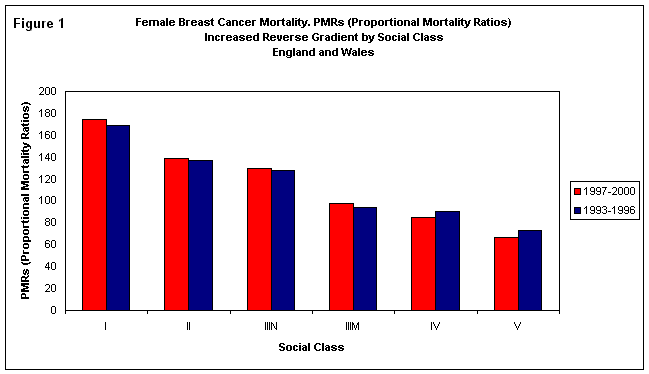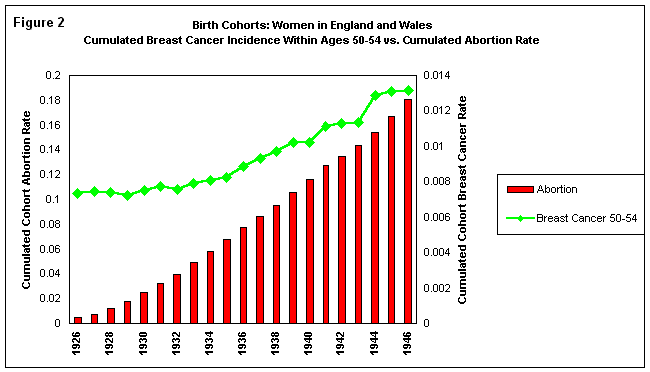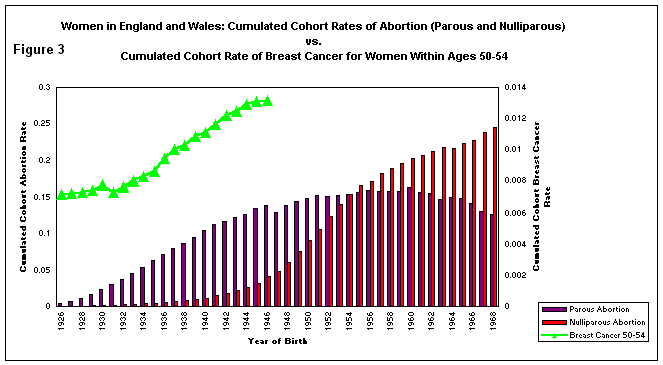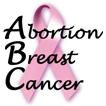Trends and Risk Factors in English Breast Cancer
Increase in Reverse Gradient across Social Class for Female Breast Cancer in England and Wales
Unlike other cancers, where the lower social classes have the higher incidence and the higher mortality, female breast cancer has a reverse gradient.
Health Statistics Quarterly Winter 2003; ONS, London
Note:
Figure 1 illustrates a recent ONS report and shows how the highest social class has a PMR(Proportional Mortality Ratio) of 174 for the years 1997-2000 compared to a PMR of 169 for the years 1993-96. By considering known risk factors that might explain this increase, there is the potential to model and forecast any further increase in the gradient to be anticipated in the years 2001-2004 when ONS next repeat the exercise.
Reproductive, hormonal and pregnancy related risk factors are especially relevant to breast cancer incidence.
Legally Induced Abortion found to be the best predictor of British Breast Cancer Trends.
Figure 2 shows the high correlation, with coefficient over 0.9, between cumulated cohort abortion rates and cumulated cohort breast cancer rates for new malignant cancers reported for women within ages 50-54 for successive birth cohorts of women.
This is higher than the negative correlation with fertility, or number of live-born children, of around 0.3. Fertility is also a useful predictor of British trends. However age at first birth and childlessness, that are also well established as risk factors for breast cancer, do not explain the observed increase in breast cancer incidence in Great Britain.
Consideration of Trends in Nulliparous Abortions explains the increased reverse gradient in British Breast Cancer and can be used to predict further increases in this gradient.
Nulliparous abortions, when the woman has an abortion before she has any full term pregnancy, are especially common in the higher social classes of women. Graduate and Professional women start to have children at a later age and when they are pregnant as teenagers or in their twenties they are more likely to choose an abortion than lower class women.
Figure 3 shows how there is a steep increase in the cumulated cohort rate of nulliparous abortions for successive birth cohorts of English women. This is steeper than the cumulated cohort rate for all abortions that runs parallel in Figure 2 to the increase in breast cancer.
A simple additive probability model has been developed to predict the further increases to be expected in post menopausal Breast Cancer Incidence in future years using cumulated cohort Fertility and Abortion rates as explanatory variables.
This modelling can also be adapted to forecast a further increase in the reverse gradient across social class of English Breast Cancer, when the additionally carcinogenic effects of nulliparous abortions are explicitly estimated.
PAPRI
Pension and Population Research Institute
35 Canonbury Road
London N1 2DG
Tel 020 7354 5667
Registered charity in England number 327942





